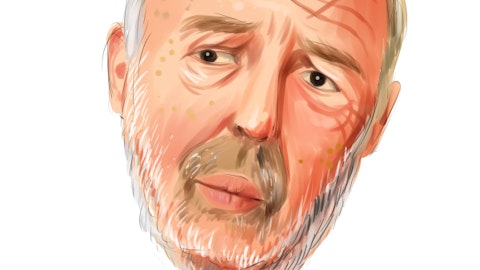David Stephenson: Yes, I think what we’re seeing in the near term for Q3 is what we’ve included here. We’re anticipating it to be up year-over-year driven by foreign exchange and the mix shift of larger homes and geographic mix. I think over time, because we’re seeing things like Latin America growing nicely, Asia growing nicely and more of cross-border travel, you could see some moderation of our ADRs over time, but again, we’re talking moderation, we’re talking a percentage point in our here or there. We have better visibility into Q3 right now, which thinks it’s going to be up year over year, longer term, it could be flat-ish to maybe moderately down over time, but at the same time, we keep predicting that ADRs are going to decrease and each quarter, it’s been amazingly resilient throughout the last few number of quarters, so I don’t have much more to say beyond that.
Operator: We’ll go to our next question from James Lee at Mizuho.
James Lee: Great, thanks for taking my questions. Two here, one on ADR, you guys talk about, obviously, North America decreased by one percent. I was wondering if you can maybe unpack between life alike and maybe next shift, so we can better understand the dynamic. And also secondly, maybe can you talk about the price elasticity as you’re allowing hosts to use the tools to adjust the pricing? What do you see from consumer out there, travelers out there, in terms of reacting to those price changes? Thanks.
Brian Chesky: Sure, we absolutely measure the price elasticity of our pricing and we see a good benefit from lower pricing driving increased nights overall. I think, obviously, affordability is super important in people’s minds all around the world. We definitely see it specifically in North America where while calendar prices have increased, that is the average price available on Airbnb have gone up, the booking prices of what people are actually booking are declining. So that just shows you the desire for people to have great value. In North America specifically, what we saw was it was down 1% year-of-year, but like for like, so that means the same property on average, excluding mix of size, location, and type was actually down 4%.
So on a like for like basis our ADRs in North America is actually down 4%. And that’s very different than what we’re seeing the hotel industry kind of touting increases of six to 10% or more. So that’s where the gap in value continues to widen.
James Lee: Okay, I have one more question here, Dave. A lot of investors are asking about maybe student loan forgiveness, expiration. I was wondering how you think about this issue, anything that’s contemplating into your guidance for FY23. Thanks.
David Stephenson: Yes. I don’t have a specific point of view on the student loan forgiveness and impact on guidance. I think what we’re seeing is that in the face — people keep waiting for the economic shoe to drop and get concerned about whether or not people are willing to travel and whether the economy is going to have a drag on our overall results. And it’s just not what we’re seeing. We’re seeing a strong resilience in travel that people are prioritizing, travel over other things. And all the work that we’re doing to make sure that we’re providing great value and even either moderating or having prices come down just gives us greater value relative to alternatives, which I think is the tailwind on why we’re continuing to, by all of our estimates, gain share of total accommodation nights, both quarter-over-quarter and year-over-year.
James Lee: Okay, great, thank you.
Operator: We’ll go next to Ken Gawrelski at Wells Fargo Securities.
Ken Gawrelski: Hi, thank you. I want to come back to the ADR issue. And Brian, if you could talk about-it was very helpful detail on the 4% kind of like for like in North America, but how do I square Dave’s comments that you see overall ADRs kind of flattish over the medium term with your comments that you want to continue to drive affordability? I know you’ve introduced some tools and you’re seeing some impact there. And maybe the follow-up to that is, how will you know when the marketplace is in balance and where you’ve kind of reached equilibrium and the ADRs in the right place? Thank you.
Brian Chesky: Again, yes, I’ll start. So I think affordability and our prices have to be taken into account relative to the rest of the market. Obviously inflation is up, most everything in the world is more expensive today than it was a year ago. And I presume that will be the case next year this time. We know, for example, that while our price in North America like for like or down 4% hotels are at least 4% higher in some estimates are they might even be approaching double digits higher. And based on recent comments I’ve been hearing, I think they expect for prices to continue to go up. So if we live in a world where Airbnb prices do not go up and the even remain flat or stable and hotels continue to rise, then Airbnb continues to become more affordable relative to hotels, which are still much larger audience than Airbnb.
But that brings up a different question, which is, how do you balance the right prices for guest and host? It’s good to the marketplace. And so we have hosts, these aren’t just suppliers we have no relationship with. So our goal is not to drive down prices as low as possible. The prices have to find a balance between the very best affordability for guests while still making sure a host can make any meaningful income and it’s still really valuable income for them to earn. Now, one of the things we’ve seen is there’s a lot of sensitivities you can look at that we can show hosts that when you lower your prices to a point, you actually will get more business because most hosts have very low occupancy. They’re not like hotels. A hotel is usually booked like 20, 25 nights a month.





